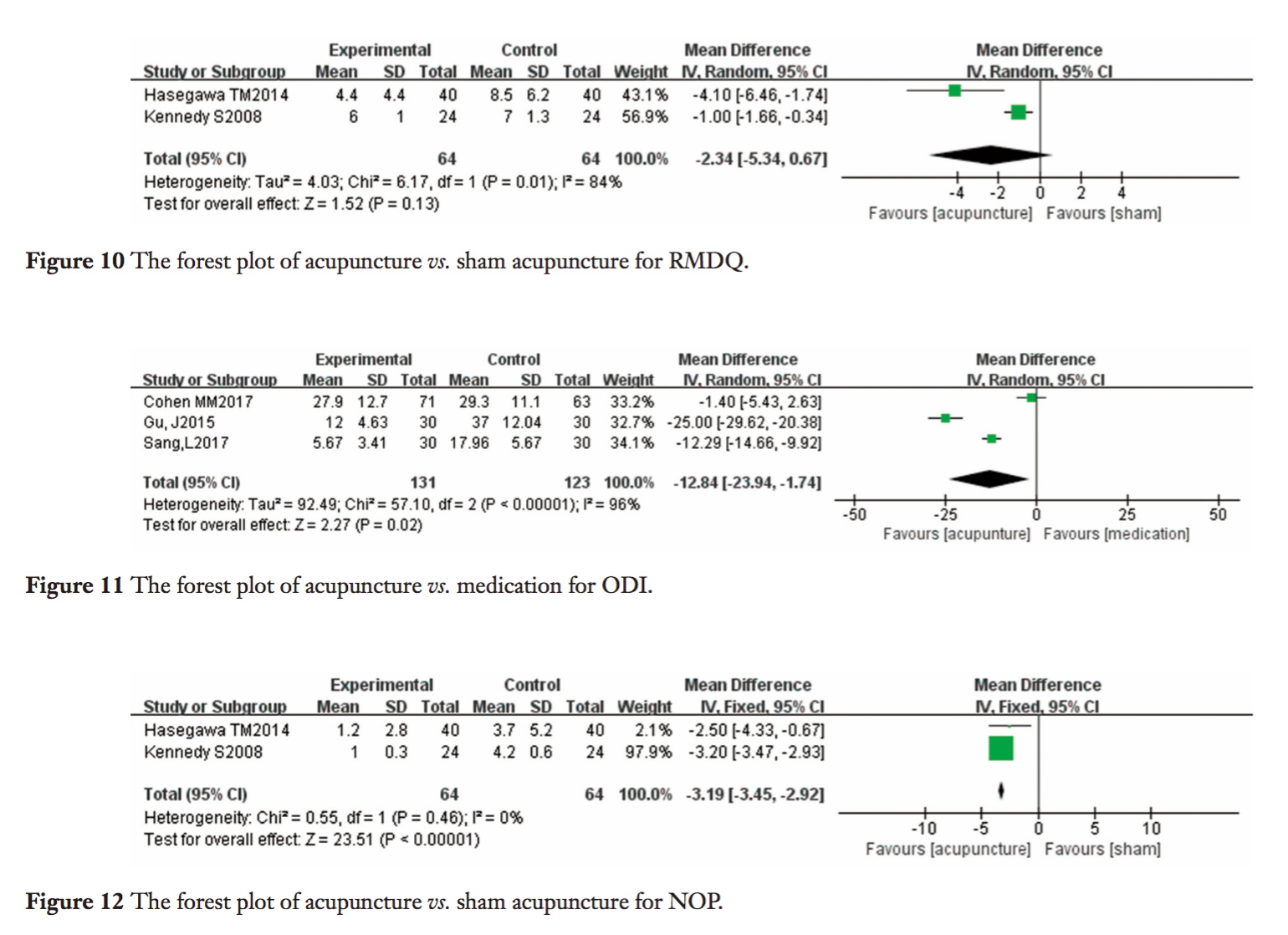Review: Acupuncture is effective in the treatment of acute low back pain
Su, X., Qian, H., Chen, B., Fan, W., Xu, D., Tang, C., & Lu, L. (2021). Acupuncture for acute low back pain: a systematic review and meta-analysis. Annals of palliative medicine, 10(4), 3924–3936.
https://doi.org/10.21037/apm-20-1998
QUESTION
Is acupuncture effective in the treatment of acute low back pain?
DATA SOURCES
Studies were identified by searching the Allied and Complementary Medicine Database (AMED), the Cochrane Central Register of Controlled Trials, Embase, Medline, the China National Knowledge Infrastructure database (CNKI), the Wanfang database, and the Chinese Science and Technology Periodicals database (VIP) (up to May, 2020).
STUDY SELECTION
Randomized controlled trials (RCTs) concerning acupuncture for treating acute (≤12 weeks) low back pain of participants aged ≥18 years were included, while conference papers, systematic reviews, case reports, research protocols, and experimental animal studies, studies with incomplete data were excluded (Fig 1).
DATA EXTRACTION
Two authors independently screened the studies and extracted data. Risk of bias was independently assessed using the Cochrane tool and the consistency evaluation of risk of bias assessment was examined using the kappa coefficient. Statistical analysis was performed using Review Manager version 5.3.
MAIN RESULTS
Meta-analysis showed moderate-quality evidence that acupuncture has a statistically significant association with improvements in VAS, ODI, and NOP, but not RMDQ.
CONCLUSION
Acupuncture is effective in the treatment of acute low back pain.
COMMENTARY
Authors identified 13 RCTs that address the question (Table 1). Sample size ranged from 20 to 71. Interventions in the treatment group included manual acupuncture, electroacupuncture, beryllium acupuncture, wrist-ankle acupuncture, Fu’s acupuncture, and Yamamoto’s acupuncture. The interventions in the control group were sham acupuncture and pharmacotherapy. The primary outcome included the visual analogue scale (VAS) and the secondary outcomes included the Roland-Morris Disability Questionnaire (RMDQ), the Oswestry Disability Index (ODI), and numbers of pills (NOP). Among the 13 studies, 5 were rated as high quality and 8 as low quality.
The result of 11 studies showed that the acupuncture group had a greater improvement in VAS than the control group (Fig 4).
The result of the subgroup analysis showed that acupuncture had a greater effect on VAS than sham acupuncture and drug (Fig 5); acupuncture given once a day, once for 2 days, and twice for 3 days between 1 day and 2 weeks, and once or twice a week for 2 weeks or more had a greater effect on VAS than control group (Fig 6); both local and distal acupoint selection had a greater effect on VAS than control group (Fig 7).
Secondary outcome (RMDQ, ODI, NOP) results are below (Fig 10).
Authors conclude that “acupuncture treatment was associated with modest improvements in the VAS score, ODI score, and NOP, but not with improvement in RMDQ score in patients with acute LBP [low back pain],” and suggest that “high-quality trials are needed further to assess the role of acupuncture therapy for acute LBP.”







